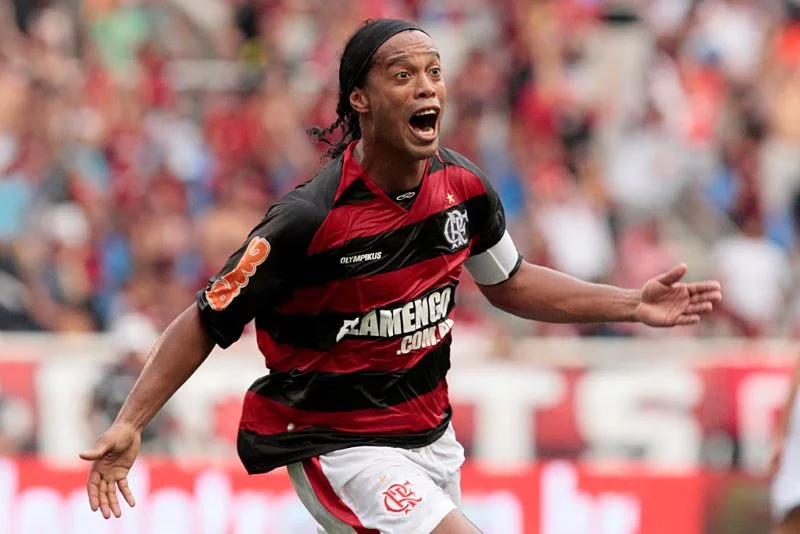In the pulsating heart of Brazilian football, a rivalry simmers – one that transcends mere competition and delves into the very identity of its participants. This is the story of Flamengo and Fluminense, two giants of the game whose rivalry is not just a clash on the pitch but a reflection of contrasting cultures, histories, and passions. Known as the Fla-Flu derby, this encounter is more than just a football match; it’s a vibrant tapestry woven into the fabric of Brazilian society.
The roots of this rivalry run deep, stretching back to the early 20th century. It’s a tale of splintered origins, where a group’s decision to break away from Fluminense led to the creation of Flamengo’s football department. This act of rebellion laid the foundation for a rivalry that would grow to epic proportions, etching its mark on the history of Brazilian football.
The Evolution Of The Rivalry
The Fla-Flu derby is not just about the players who grace the field or the trophies lifted. It’s a narrative of two clubs evolving amidst the backdrop of a changing Brazil. Flamengo, often seen as the people’s club, has a fan base that spans across various social classes, symbolizing inclusivity and diversity. Fluminense, with its more aristocratic roots, represents tradition and prestige.
This contrast has only fueled the intensity of their meetings, turning each match into a clash of ideologies as much as a sporting contest. Flamengo and Fluminense are not only rivals on the field but also compete for the title of Top 10 Brazilian Football Clubs on Twitter, showing their massive digital fan following.
Historical Matches And Moments
Diving into the rich history of the Fla-Flu rivalry reveals a treasure trove of unforgettable matches, each etched in the annals of football history. Let’s revisit some of these iconic encounters, where legends were made and the rivalry intensified.
- The Birth of a Rivalry – 1912: The inception of this intense rivalry can be traced back to July 7, 1912. It was the first official match between the two teams, with Fluminense triumphing 3-2 over Flamengo. This inaugural clash set the stage for a century of rivalry, marking the beginning of an epic saga in Brazilian football.
- The 1941 State Championship Final: One of the most memorable encounters came in the 1941 State Championship Final. Flamengo, led by the legendary Leônidas da Silva, faced a strong Fluminense side. The match was a nail-biter, with Flamengo edging out Fluminense 3-2. This victory was significant, as it marked Flamengo’s ascent as a powerhouse in Rio de Janeiro’s football scene.
- The 1963 Carioca Championship: Flamengo and Fluminense’s clash on December 15, 1963, in the Carioca Championship is another historic moment. Flamengo clinched the title with a decisive 4-1 victory. This match was notable for the brilliance of Flamengo’s attack and marked a period of dominance for the club in the local football landscape.
- The 1995 Campeonato Carioca Final: Fast forward to 1995, and we witness another epic encounter. The Campeonato Carioca final saw a dramatic match where Fluminense, against all odds, triumphed over Flamengo. Renato Gaúcho became a Fluminense legend by scoring a memorable bicycle kick, sealing a 3-2 victory for his team. This match is often remembered for its high drama and the sheer willpower displayed by Fluminense.
- The Centennial Match – 2012: Celebrating 100 years of rivalry, the centennial match in 2012 was a showcase of history and passion. The game ended in a 0-0 draw, but the occasion was about more than just the score. It was a celebration of a century-long rivalry, highlighting the cultural and historical significance of these encounters.
These matches are just glimpses into the storied history of the Fla-Flu rivalry. Each game has contributed to the rich tapestry of this competition, embedding itself in the hearts of fans and in the history of Brazilian football.
Cultural Impact And Fan Dynamics
Beyond the pitch, the Fla-Flu rivalry has permeated Brazilian culture. It’s reflected in music, literature, and even politics, illustrating how deeply football is intertwined with the country’s identity. The fans, with their vibrant displays, passionate chants, and unwavering loyalty, are the lifeblood of this rivalry.
They transform stadiums into arenas of color and noise, embodying the spirit and intensity of the Fla-Flu derby. Flamengo and Fluminense, revered as two of the most followed Brazilian football clubs, command a significant presence both on and off the field, highlighting their widespread influence. What’s more, learn everything you need to know about the most popular Brazilian football club in the world, Flamengo, here: https://forcaflamengo.com/historia-flamengo/
Contemporary Perspective
In recent years, the rivalry has adapted to the changing landscape of modern football. Globalization, commercialization, and technological advancements have reshaped how these clubs operate and compete. Yet, the essence of the Fla-Flu remains unchanged. It’s a contest that continues to captivate, not just in Rio de Janeiro but across Brazil and beyond.
Concluding Thoughts
The Fla-Flu derby is more than a fixture in the football calendar; it’s a celebration of a rivalry that has stood the test of time. Each match writes a new chapter in this enduring saga, a testament to the unrelenting passion and spirit that define Brazilian football.
For fans and neutrals alike, the Fla-Flu is not just a game to be watched – it’s an experience to be felt, a rollercoaster of emotions that captures the very essence of what makes football the beautiful game.
